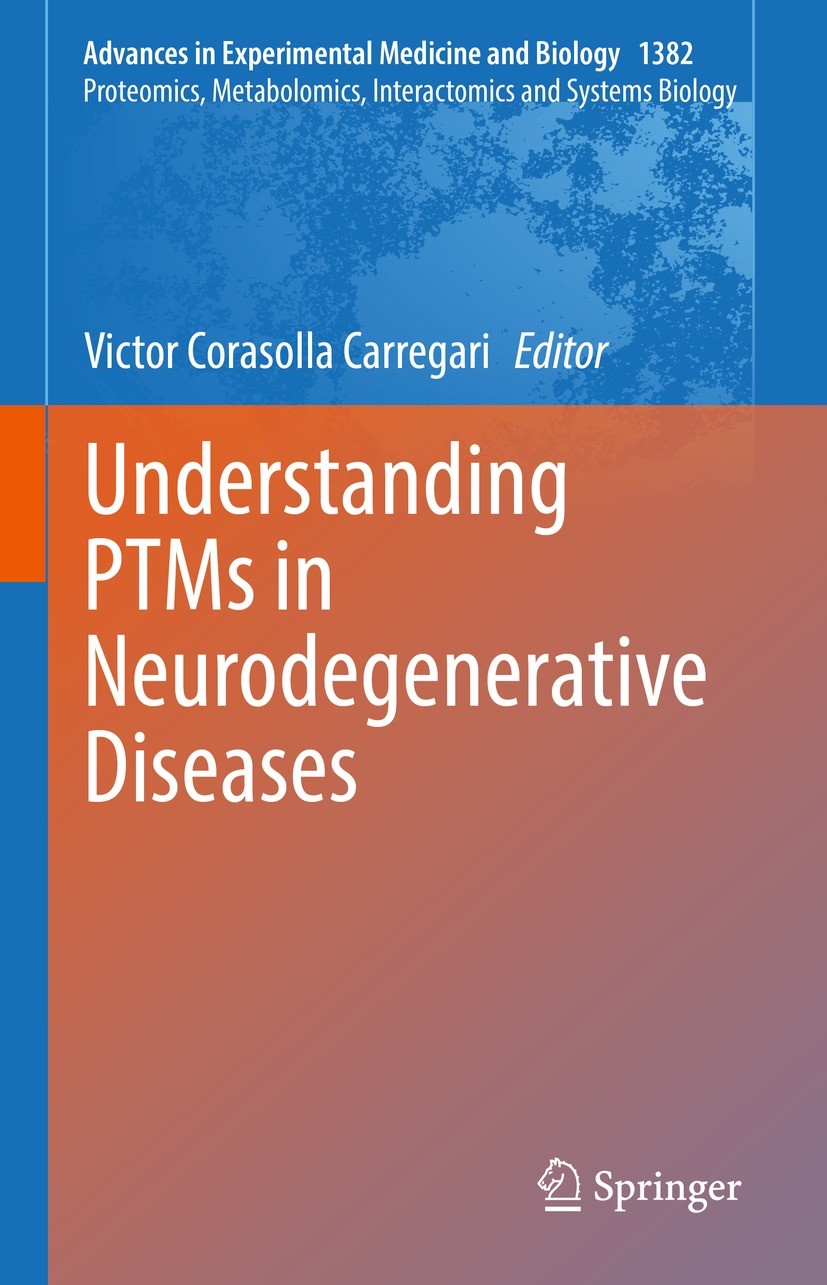| 书目名称 | Understanding PTMs in Neurodegenerative Diseases |
| 编辑 | Victor Corasolla Carregari |
| 视频video | http://file.papertrans.cn/942/941584/941584.mp4 |
| 概述 | Increases awareness of how PTMs may help researchers understand mechanisms in neurodegenerative diseases.Explains how proteomic studies of PTMs can be applied to neurodegenerative diseases and relevan |
| 丛书名称 | Advances in Experimental Medicine and Biology |
| 图书封面 |  |
| 描述 | This new volume, a part of the Proteomics, Metabolomics, Interactomics and Systems Biology series, will explain how proteomic studies of post-translational modifications (PTMs) can be applied to neurodegenerative diseases and relevant studies. The goal of the book is to increase awareness among researchers about how PTMs may be helpful in understanding mechanisms in various neurodegenerative diseases through proteomic studies. This book will serve as a tool for those who want to begin work in the proteomics field and explore how to implement PTMs studies into their work. Chapter authors will describe different PTMs enrichment methods developed by experts in the field so that researchers may learn to apply these methods and techniques to new studies. Divided into three sections, chapters will cover sample preparation, data quality, enrichment techniques, guidelines on how to analyze PTMs, and explain the role of PTMs and different brain diseases. Among those topics includes will be brain cancer, SLA disease, Parkinsons disease, muscular dystrophies, and schizophrenia. This volume will be useful for researchers and students studying brain and neurodegenerative diseases who are intere |
| 出版日期 | Book 2022 |
| 关键词 | proteomics; neurodegenerative diseases; Phosphopeptides; Glycopeptides; Acetylation; enrichment technique |
| 版次 | 1 |
| doi | https://doi.org/10.1007/978-3-031-05460-0 |
| isbn_ebook | 978-3-031-05460-0Series ISSN 0065-2598 Series E-ISSN 2214-8019 |
| issn_series | 0065-2598 |
| copyright | The Editor(s) (if applicable) and The Author(s), under exclusive license to Springer Nature Switzerl |
 |Archiver|手机版|小黑屋|
派博传思国际
( 京公网安备110108008328)
GMT+8, 2025-12-14 08:09
|Archiver|手机版|小黑屋|
派博传思国际
( 京公网安备110108008328)
GMT+8, 2025-12-14 08:09


